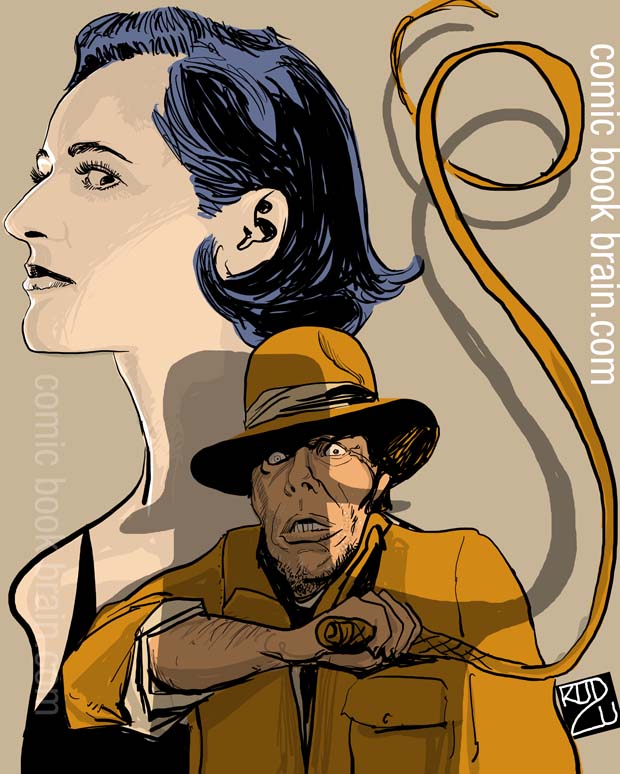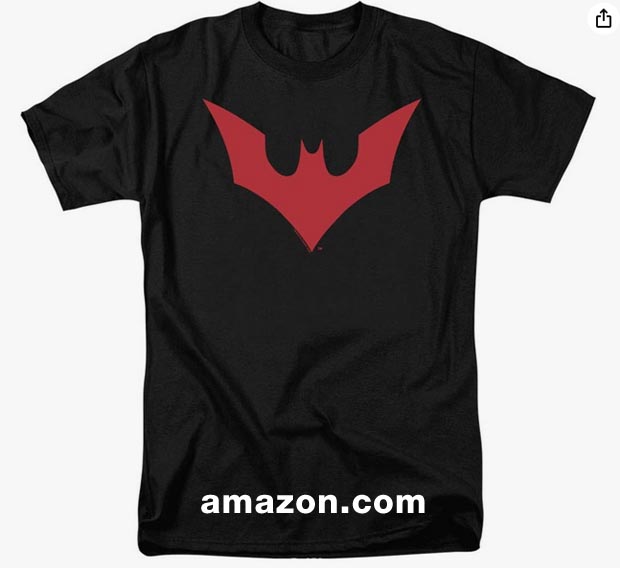Review: Indiana Jones and the Dial of Destiny
I liked the film but I've got complaints

Harrison Ford looks good for eighty-years old, but the film is trying to make Indy have one foot in the grave while the other foot is kicking Nazi-butt and it just doesn't jive all the time.
This film has been castigated by some critics for making the character of Indiana Jones a grumpy old man who wishes to die and who gets bested by a feminist she-rebel and everything's awful and Woke and it's just depressing. But that must be some other cut of the movie, because what I saw at a theatre in Virginia on opening weekend was a legitimate Indiana Jones adventure film, but one that is tonally different from the four films from George Lucas and Steven Spielberg.
"Do over" time travel/multiverse movies, usually meditations on regret, have taken over superhero films and threatens to consume that whole genre, and the virus has clearly spread. The infection in Indiana Jones and the Dial of Destiny is perfectly valid, though, because at the center of the film is Indiana Jones and a family tragedy and though its not headlined in the tale in a bold way, its there as a little beating heart to a lot of what we're seeing. This is handled fine by director James Mangold and writers* and is provided as a kind of stinger and sub-reason for Harrison Ford's already gruff and grumpy acting style to be taken a little further into grumpy-supremecy (which this film production, like all the other Indy films, presents as an endearing trait instead of annoying).
What's the movie about? A lethal group of intelligence agents are running amok trying to get an ancient artifact from Indy that he'd prefer to not hand over, and this leads to more contretemps throughout the tale, especially among the cast of characters, particularly a clever and long-lived Nazi played by Mads Mikkelsen. Well, Indy is more clever than he and a character we don't even see until near the end is actually more clever than all of them, and seeing a Nazi get beaten is of course an Indiana Jones custom (there's even a funny in-joke to this, with a Nazi dangling for his life from the bomb hatch of a flying airplane, and a character looking down in apology for not rescuing him: "I'm sorry, but you're a Nazi").
Indiana Jones movies have twists at their end, and this one is good. The Twilight Zone undertone of the whole film series is earnestly earned and Dial fits right in that tradition. The stunt work throughout is good and only some iffy CGI breaks through the visual "sense of reality" a few times as the film churns along.
If there is any particular sin that this film has committed that stands out is that it simply is not better than the other Indiana Jones films. This problem plagues all of the latter Raiders films, and its pretty rare for a fan to rank one of the sequels higher (though sometimes someone will say The Last Crusade is the best). Dial of Destiny certainly isn't perfect and in a sense, without the machine-perfection of a Lucas plot line, it is in that area Dial is the weakest of the bunch and where some characterization gets messy.
How Dial fits in with the previous Indy films
Kingdom of the Crystal Skull tried to outdo all of the previous films by filling out a broader family background for Indy and by amping the death-defying adventure into an even more treacherous and incredible (CGI) level. Dial goes down the same road, while loaded with stunts and CGI, too, and has tried to latch onto that film's direction in a different way.
First of all it lays in a more contemporary sense of paranoia about government workings, whereas the other Indy films only implied how dangerous an unfettered American government might get. Dial lays it on the line with a body count and this has Indy racing for his life and getting out of the country as quickly as possible, a sinister and lethal element that would have been impossible to add into Raiders of the Lost Ark. If by the time we got to Crystal Skull we had George Lucas' screenplay asking where did things go wrong in America? then Dial O' Destiny isn't coherently answering the question but it sure looks like things have gotten out of hand in the years since the "I like Ike" stage of America.
Characterization in Dial of Destiny is consistent with the previous films as far as the secondary cast goes with Antonio Banderas appearing as a helpful old pal in the Aegean who has a dive boat, to Raiders and Last Crusade alumni John Rhys-Davies appearing as a cab-driving Sallah in New York City. Toby Jones appears as an obsessed, scribbling Oxford professor (who seems to be another crazy, scribbling professor like the one we saw in Crystal Skull but given considerably less space to present the character) who may not live through the whole tale but he figures greatly in why the tale is being told. This is all done well but it is in the front line cast we get some blurry renderings.
Phoebe Waller-Bridge plays Indy's goddaughter Helena and is our main co-star, and though she has a Pre-Raphaelite profile, her hairdo doesn't complete that picture, which is just as well since her character is the direct opposite of the ethereal English-beauty who ambiguously influences influential men around her. In Dial she's in the Marion Ravenwood mode of out drinking and sometimes outfighting men, and here you can almost see the workings of the scriptwriters trying to repeat and complete the template laid down by Raiders of the Lost Ark, but like showing us American intelligence agents gone bad without explanation, the script just doesn't connect all the dots for the behavior of Helena, either, who is a grifter who is, well, somehow also a "good guy." It is as if we're to make some sort of completed picture on our own by referencing our memory of the tough and indomitable, and ultimately completely trustworthy Marion Ravenwood from Raiders, but the screenwriters just don't map out the character of Helena in a way that explains this echo, and your guess is as good as mine for why Helena's character undergoes a steady ethical improvement as the film rolls along without any obvious choice that I noticed being a catalyst for the change. Perhaps the connecting tissue was cut out of the film.
Mads Mikkelsen is a Nazi named Jurgen who has ideas about correcting the mistakes Hitler made, but whether that means cancelling Hitler and benefiting Germany or just being a super-nazi who can out-nazi Hitler just isn't clear. Since Jurgen is ruthless and apparently sociopathic in a quietly demented and nerdy way, it doesn't much matter about the qualities in his ambition, which simply isn't explained by the film, he's just doing what a Nazi villain does, and maybe the explanation is also on the cutting room floor.
Complaints about The Dial of Destiny
Like an Indy film, the story speeds its way through multiple locations on the globe, but one whole section is in 1960s New York City (actually filmed in Glasgow, Scotland), and though impressively staged, this is probably the worst section of the film with coloring that sometimes looks dipped in tobacco juice. I understand color tinting is used to designate an older time period, but it just adds to the cloud of depression that is percolating in the film which is launched by having Professor Jones in front of a college class that just isn't interested in his lecture, a dramatic difference to the hilarious Raiders scene in which the students are rapt with concentration and adoring looks. This is probably the point of the scene in Dial for the film-makers, to tell us the aged 1960s Professor Jones can't cut it in front of a class anymore, and that times have changed. Or maybe they're telling us 1960s college students are knuckleheads. Well, I don't know for sure, and like the blurry rendering of Helena and Jurgen, it would have been better for the filmmakers to tighten all this stuff up, but this actually directly connects to my main suspicion about this film: the marketing of it.
Harrison Ford appearing in a shadow beneath the trademark Indiana Jones' Fedora hat isn't a fluke. The repeated image advertising the film is showing us Indiana Jones "in shadow" which is a millennium long art visual tip referencing advanced age and death. Can't knock the filmmakers for using a classical approach to visual storytelling, but it also shows off the compromised nature of the story, with it trying to have a revived and desperate Indiana Jones on one last super-adventure to save the world while accompanied by an equally resourceful and adventurous female. That's all well and good, but the "we're killing Indiana Jones off" wrapper** around this movie jeopardizes it for anyone caring to notice this psychological bent and, well, probably resenting it (the heavy count of negative reviews for this film apparently reflects this, complaints of "depressing" being a regular spoken criticism. I can't imagine what the reaction would be if Disney had tried to pull off a dead-Indy movie like the last Daniel Craig Bond film).
My sense of it all is that Disney meant to have Indiana Jones hand over the baton, I mean whip, to a new 21st century female adventurer but they couldn't make themselves follow through on the idea and so here we are with Indiana with one foot in the grave and another foot incredibly hopping and leaping along the top of a speeding train (which is probably the worst special effect in the film, it simply doesn't look like a real human running and leaping like Buster Keaton over the top of the train cars.***)
Harrison Ford is eighty-years old but he carries this film, along with the secondary cast that helps move everything along and to complete the background for us like all the other Indy films. Why Phoebe Waller-Bridge and Mads Mikkelsen aren't allowed to fill out their characters better is a mystery to me. Maybe the film actually contains all of this information in dialogue that passed by too quickly and wasn't reinforced like is done in a typical movie. I don't know, but while the main thrust of the movie is fine and enjoyable, the inner workings are in disarray and seems to be a case of the usual over made, bloated super-production that has hurt plenty of expensive films in the past, and Indiana Jones and the Dial of Destiny is ranked as one of the most expensive films ever made.
Thinking about the Indiana Jones films and the Dial of Destiny
When Raiders of the Lost Ark came out in June 1981, it was a revelation to younger film goers. Adventure films had been on the ropes for awhile. Tarzan movies had died out in the 1960s, and though Ray Harryhausen was keeping the Sinbad films going, Sci-fi, because of Star Wars, was the only other place "adventure" had a home on the big screen. There were elements of "adventure" in other genre types, cowboy films, car chase heist films, war films, even horror. But a straight-up adventure film that was directly linked to the adventure films of Hollywood's past were pretty spare. The Doc Savage film of 1975 tried to pretend it was going in this direction but ended up producing farce and making fun of itself.
But George Lucas, who had cannibalized science fiction and used a solid foundation based not on 50's, 60's and 70's sci-fi but on the "antique" sci-fi of Flash Gordon and Buck Rogers, made the super-hit Star Wars and then went in the same direction with a Indiana Jones script which brought together elements of two-fisted explorers like Allan Quartermain and the resourceful archeological adventurers of older films like The Golden Mask (1953) and Valley of the Kings (1954).
Lucas's main twist was that the past was a nest of powerful secrets that hinted at UFOs, played up the supernatural, combined it with a smattering of Sunday-school biblical knowledge, all synthesized around an "all-American" tough guy with a professor alter-ego who wore glasses. Books about UFOs which were heavy on archeology were best sellers in the 1970s, and the ending of the "malaise" of the late 1970s transitioning into a nostalgic (and optimistic) early 1980s was a perfect environment to put out a movie with a WW2 setting.
It would have been a difficult juggling act to bring all of that together for any filmmaker on assignment, but Lucas, Spielberg and Harrison Ford believed in their project (and the variety of gimmicks borrowed out of older movies) and galvanized it in such a way it looked almost effortless. It was if cinema had skipped over the 1960s and 1970s and reconnected to some root-level "can-do" force that exists in the old movies where failure and self-doubt are inconveniences to be brushed-aside or at least beaten back with snarky dialogue.
Dial of Destiny, on the other hand, is trying hard to keep all of that together and to bring it into the 21st century (though none of the film takes place in this century) and the film just doesn't have the same sharp-focus that Lucas's scripts had, and it has a reduced sense of old-Hollywood. Maybe that's simply inevitable, like Harrison Ford turning eighty. But Dial of Destiny is the "B-movie" in the Indiana Jones series, which, to be honest, is still head and shoulders above the many imitations of the Indiana Jones' style.
Footnotes
* Jez Butterworth, John-Henry Butterworth and David Koepp and director Mangold who apparently did the final script version.
** They don't actually kill Indy, he gets a legitimate happy ending that works within the narrows confines of what a Happy Ending could be with a plotline like this one. But it does bring to mind the amount of distance between the phantasy-adventure of the peppy Temple of Doom to glum Dial of Destiny. Even though Dial has time travel which is a considerably more fantastic magic trick than what is in the human-sacrificing but happy-go-lucky spirit of Temple of Doom a comparison of the two makes Dial look like an effort to make a more adult Indy film with an adult-film finale for the character, and it feels like Disney is apparently closing down the character with no intention of going forward unless they reboot the whole thing. A reboot seems crazy considering how deeply embeded into the WW2 to 1980s generation (i.e., baby-boomers) the series is. If Dial of Destiny shows anything it is that Disney can't understand the character or the series, or, if it does understand the character, it simply doesn't like it, which is more or less the feeling Disney gives off about a lot of the characters it has purchased off of other studios during its last decades-long I.P. buying spree.
*** Why didn't they use a living stunt double? The distance from camera is so far there'd be no trouble pulling it off. My suspician is this must have been a last minute addition to the film and CGI was the only way to do it, such as it is perhaps covering over a section of scenes that were cut out. Whatever the case, its video-game realistic but not action film realistic.
Batman Shirt Modern Logo – Amazon
Original Page July 2023 | Updated July 5, 2023

